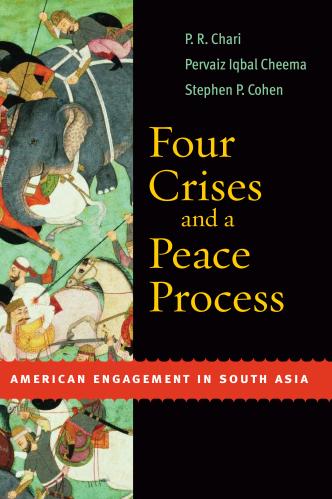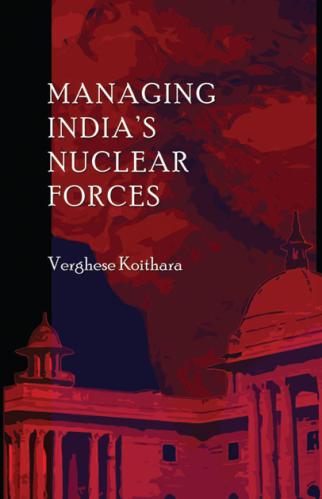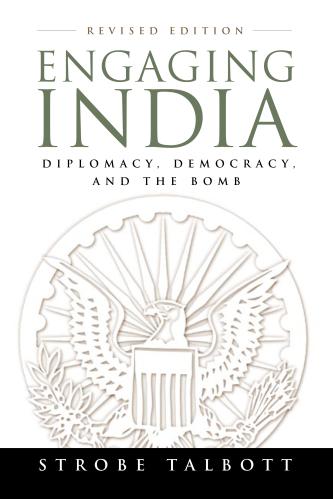Content from the Brookings Institution India Center is now archived. After seven years of an impactful partnership, as of September 11, 2020, Brookings India is now the Centre for Social and Economic Progress, an independent public policy institution based in India.
The United States tries to manage a troublesome and troubled former ally, which is important as much for its destructive and disruptive potential as for its positive accomplishments, such as intelligence cooperation. India’s Pakistan problem is quite different. India has no credible response against low-level Pakistani-tolerated terrorism, and is wary of slipping into an open-ended conflict with Islamabad. India’s long-term strategy is to isolate and squeeze Pakistan, the way the United States manhandled the Soviet Union. India would like to use its soft power and the support of other states—notably the United States—to effect a change in Pakistan’s outlook; until now this strategy is mostly wishful thinking. Practically, Pakistan is also an internal political problem for India’s Prime Minister Narendra Modi.
Modi’s objective with the United States is to complete the erasure of Washington’s historic downgrading of India to a second-rate or regional power. He stresses India’s cultural greatness while touting its military capabilities and its economic potential. These, coupled with a stronger Indian-American presence, may—just possibly—alter U.S. policy regarding Pakistan. These factors have already persuaded many Americans to see India as a potential balancer of China.
But the United States is unlikely to be moved very far. While there is hope that Indian power might balance a potentially aggressive China, both Washington and New Delhi are also hedging their bets regarding Beijing. As for Pakistan, Washington does not want to see a new regional crisis—whether initiated from Pakistan (as in the recent past) or New Delhi (as happened earlier).
Further, Pakistan is not a passive onlooker. It has an operational strategic code subscribed to by the military, key civilian elites, many academics, and a large part of the press. This involves the wilful use of force, skilled diplomacy, and a pliable civilian government. It resembles, in many ways, the high point of the British Raj. Pakistani elites have an overall goal: to avoid becoming a “West Bangladesh” subservient to Indian power. The 1947 Partition, which pitted the Indian and Pakistani armies against each other, cripples any state that seeks regional hegemony. South Asia is now the world’s third most violent region, partly because of this rivalry and also because the rivalry prevents regional integration on trade and economics.
But there are at least three steps that could help the United States and India address their respective Pakistan problems. They add up to a strategy which promotes the creation of a South Asia, that has room for both South Asian nuclear powers.
- The United States should re-open the Bonn process, and invite India, Pakistan, China and Iran as full partners in a discussion about Afghanistan’s future. Both India and Pakistan have legitimate interests in Afghanistan. After the school massacre in Peshawar even the Pakistan army is aware of the costs of their policy of supporting the Taliban. And it is not in Indian interests to see Pakistan under the control of the Taliban or Islamic State.
- India could still do more to design a regional trade and transit agreement that would rebuild some of South Asia’s regional identity including assurances that Pakistan would not be economically overwhelmed. While now euphoric about the China Pakistan Economic Corridor (CPEC), Islamabad must rebuild its regional connections to safeguard itself against the kinds of intrusions China has practiced elsewhere. This could be linked to a regional agreement on Afghanistan.
- Finally, both India and Pakistan can extend their earlier statement of “no attack” on nuclear facilities, and have their nuclear security centres jointly work on nuclear forensics and nuclear safety. In this matter, the United States could serve as a technical resource for further regional nuclear agreements. It is not in Indian or U.S. interests to see Pakistan become either a radicalised Islamic state or a collapsed nuclear weapons state. Pakistan cannot be dismantled from the outside, but there can be a larger project—which would include many Pakistanis—to normalise it. India and Pakistan will not be allies, friends, or strategic equals, but a nightmare scenario in which Islamists gain control over even a few of Pakistan’s nuclear weapons—feared by many Americans—is not inevitable. Ships that pass in the night are preferable to ships that collide and sink in the night.
This memo is part of the Brookings India publication, India-U.S Relations in Transition. The views are those of the author(s). Brookings India does not hold any institutional views.
The Brookings Institution is committed to quality, independence, and impact.
We are supported by a diverse array of funders. In line with our values and policies, each Brookings publication represents the sole views of its author(s).







Commentary
Op-edIndia-US relations: Pakistan
June 4, 2016